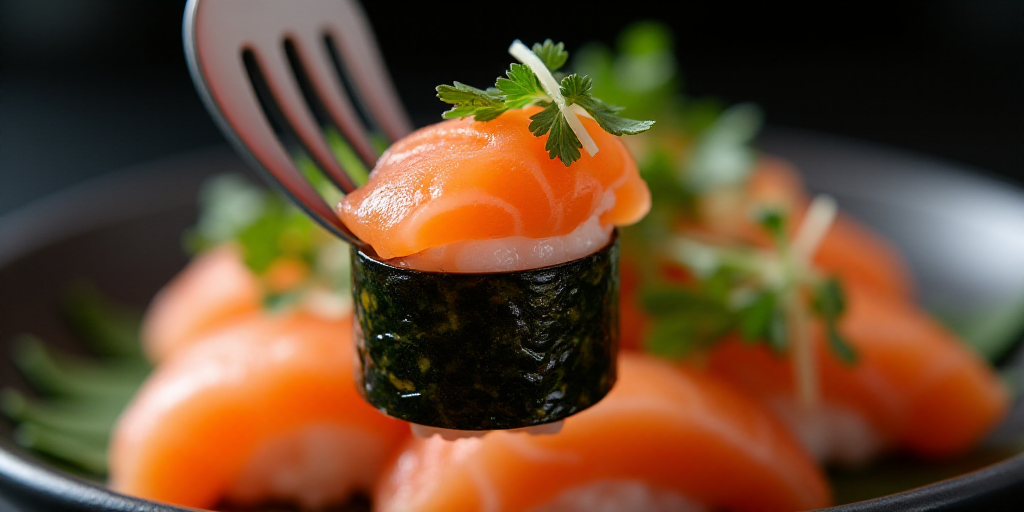Introduction
On June 18th, the International Sushi Day is celebrated. In Mexico, Japanese sushi has become a common part of daily consumption, with record-breaking delivery numbers, local adaptations, and a growing market.
From Exclusive Dish to Mainstream Consumption
Sushi has transitioned from an exclusive dish to one of the most consumed foods in Mexico through digital platforms. In the past year, delivery platforms like DiDi Food, Uber Eats, and Rappi have facilitated over 10 million orders.
Successful Local Adaptation
The surge in sushi popularity isn’t just due to globalization of food habits but also its successful adaptation to local tastes. Local adaptations include breaded rolls, combinations with cream cheese, avocado, mango, sweet or spicy sauces, and even fusions with ingredients like grilled beef or roasted jalapeños, all of which have become part of regular consumption across the country.
Growing Consumption and Delivery Platforms as Drivers
Sushi demand has consistently grown over the past three years, with significant peaks during weekends. According to DiDi Food, Sunday afternoons (between 3:00 PM and 4:00 PM) are the time with the highest number of sushi orders nationwide.
Moreover, leading delivery apps have driven the expansion of sushi to new regions and consumer profiles. Sushi ranks seventh in popularity among all food categories, with over 50,000 distinct dishes offered on the app. The cities with the highest volume of orders are Mexico City, Guadalajara, Mexicali, Monterrey, Tijuana, and Culiacán.
From Japanese Tradition to Tropicalized Icon
The history of sushi in Mexico dates back to the 1960s with the opening of the first Japanese restaurants in Mexico City. However, its consumption became popular in 1988 when Sushi Itto, a more accessible and casual chain, was founded. From then on, sushi underwent a process of tropicalization that made it appealing to increasingly broader sectors.
Sinaloa’s case is emblematic: rolls like the “Mar y Tierra,” mixing shrimp with grilled beef, are now a staple on menus across the country. This local sushi variant—often breaded, abundant, and sometimes with mayo- or chipotle-based sauces—has been popularly called “sushi culichi.”
Diversification and New Habits
The boom has also opened space for new trends. In response to the growing vegetarianism in Mexico—more than 60% of Mexicans say they follow flexitarian or plant-based diets—chains like Sushi Roll have launched 100% vegan menus. Soy-based products, whole grain rice, and marinated vegetables have gained presence in the market.
Projections and Opportunities
For the coming years, sushi is projected as a strategic product within the prepared foods sector. Its versatility, ease of distribution, high average ticket, and affinity with young, urban consumption habits keep it as one of the categories with the most potential.
Industry companies anticipate new investments, franchise expansion, and a more segmented offering according to consumer profiles, from high-end omakase to economical fast food presentations.
Key Questions and Answers
- What is the significance of International Sushi Day? International Sushi Day, celebrated on June 18th, highlights the growing popularity and integration of sushi into Mexican culture.
- How has sushi consumption changed in Mexico? Sushi has evolved from an exclusive dish to a mainstream staple, driven by successful local adaptations and digital delivery platforms.
- What are some popular sushi adaptations in Mexico? Popular adaptations include breaded rolls, combinations with cream cheese and avocado, sweet or spicy sauces, and fusions with grilled beef or roasted jalapeños.
- How have delivery platforms impacted sushi consumption? Delivery apps like DiDi Food, Uber Eats, and Rappi have facilitated over 10 million sushi orders annually, driving its mainstream status.
- What are the future prospects for sushi in Mexico? Sushi is projected as a strategic product with high growth potential, driven by versatility, ease of distribution, and affinity with young urban consumers.






